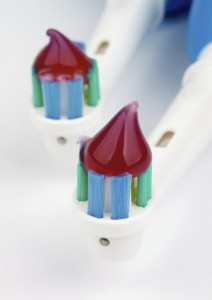 Last month, we wrote about gum disease and what measures you can take to prevent it. Gum disease exists on a wide spectrum: from bad breath (ginigivitis) to the loss of a tooth or multiple teeth (periodontitis.)
Last month, we wrote about gum disease and what measures you can take to prevent it. Gum disease exists on a wide spectrum: from bad breath (ginigivitis) to the loss of a tooth or multiple teeth (periodontitis.)
If you do indeed have gum disease, it is important that we see you as soon as possible to provide treatment. For us to assess the level of care you need, we need to determine how far your gum disease has progressed, how you have responded to earlier treatments, and your overall health. Once we have a clearer picture of what your needs are, we can then explore your options for treating gum disease.
There are several surgical and non-surgical options available:
Professional dental cleaning: If we do see gum disease during a regular checkup, we may encourage you to come back more than twice a year so we can help manage it better.
Scaling and root planing: This is a deeper clean that is done under a local anesthetic in our office. We will scrape away the plaque and tartar from above and below your gum line (scaling) and smooth away the rough spots on your teeth (root planing.) This allows us to remove bacteria and provides a clean surface for your gums to reattach to your teeth.
Flap surgery/pocket reduction surgery: This is a surgical procedure where we lift the gums back to remove the tartar. We might smooth irregular surfaces to help prevent bacteria growth, before replacing the gums. When we put the gums back, our goal is to create a tighter fit between the gum and tooth to make it more difficult for bacteria to grow.
Bone grafts: We’ll use fragments of your own bone, synthetic bone, or donated bone to replace those destroyed by gum disease. Because gum disease can destroy the bones that hold your teeth in place, a bone graft can provide more stability to hold your teeth in place. We also use tissue engineering to encourage your body to regenerate bone and tissue after a bone graft.
Soft tissue grafts: We can take tissue from another part of your body, usually the roof of your mouth, and use it to reinforce thin gums or fill in where gums have receded.
Guided tissue regeneration: When the bone supporting your teeth is destroyed, this surgical procedure stimulates bone and gum tissue growth. In conjunction with a flap surgery, we’ll insert a piece of mesh-like fabric between the bone and gum tissue to help them regrow and better support your teeth.
Bone surgery: With bone surgery, there are often shallow craters in the bone due to moderate and advanced bone loss. Our reshaping process will smoothen those craters to make it harder for bacteria to collect and grow.
Our dentists here in Catonsville are committed to keeping your gums healthy and keeping you healthy. Stop by for a visit so we can best meet your needs!
About Leikin & Baylin Dental Care in Baltimore County
Leikin & Baylin Dental Care of Catonsville offers family dental services for your whole family.
If you have any questions about oral care or wish to schedule an appointment, please contact Leikin & Baylin Dental Care of Catonsville, Maryland by calling 410-747-1115 or visit CatonsvilleDentalCare.com.
“We are a team of caring health professionals who provide unparalleled dental excellence and treat our patients as members of our family.”
You can also follow us on Facebook, Twitter, and Google+.
Source: http://www.webmd.com/oral-health/guide/gum-disease-treatments
